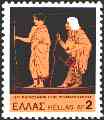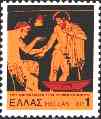 |
|
|
Greek art is characterized by the representation of living beings. It is concerned both with formal proportion and with the dynamics of action and emotion. Its primary subject matter is the human figure, which may represent either gods or mortals; monsters, animals, and plants are secondary. The chief themes of Greek art are taken from myth, literature, and daily life. Tip: please point the images with the mouse for more information.
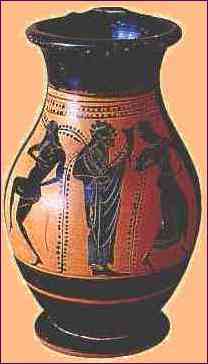 |
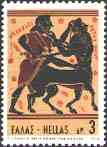 |
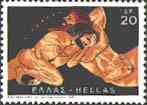 |
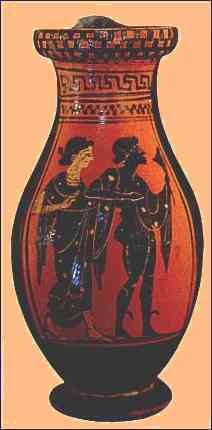 |
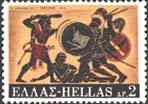 |
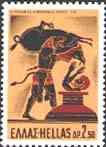 |
||
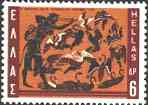 |
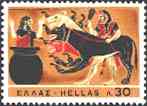 |
About 675 BC vase painters in Corinth began to decorate their wares with black figures in silhouette, usually of running animals with rounded forms, arranged in one or more small friezes. This is called the proto-Corinthian style. In the fully developed Corinthian style, which flourished until 550 BC and of which numerous examples survive, the vases are crowded with figures set against backgrounds of floral ornament. The vases often depict fabulous monsters such as the fire-breathing Chimaera, a creature with a lion's head, a goat's body, and a serpent's tail. Similar Oriental motifs appear on vases found in Laconia, Boeotia, Khalkis, Rhodes, and Sardis.
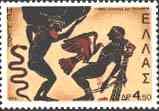 |
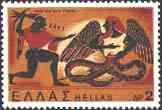 |
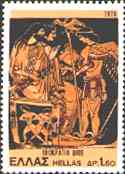 |
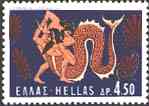 |
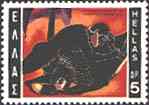 |
Athenian vase decoration was in the black-figure style, which had been brought from Corinth to Athens about 625 BC and blended with the more linear and larger-scale Athenian style. The decoration was painted in black slip on the red ground of the clay. Details were incised and were sometimes emphasized and given three-dimensionality by the use of red and white highlights.
From this period on, scenes depicted on the vases and the artists who painted them are often identified by inscriptions. About 30 vase painters signed their names on the vases, and about 100 are identified by their style.
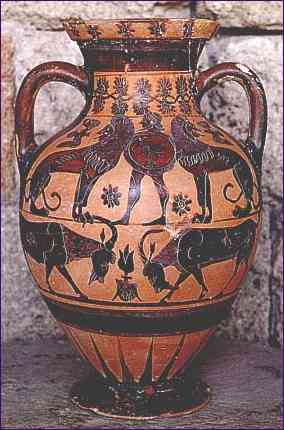 |
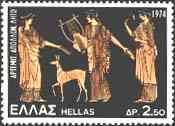 |
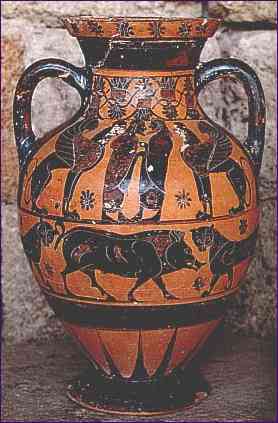 |
|
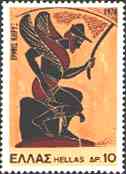 |
|||
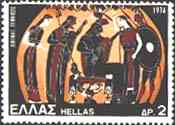 |
Modern names have been assigned to the latter painters on the basis of the present-day location of a good example of their work, for example, the Berlin Painter; the subject of a prominent work, for example, the Pig Painter; a collection containing their works, for example, the St Audries Painter; or the name of the potter for whom the painter worked, for example, the Amasis Painter. Among masterpieces are the François Vase made in 560 BC by Ergotinus and painted by Clitias (Museo Archeologico, Florence), the Dionysus Cup by Exekias (Glyptothek), and works by two of the most distinguished painters in the black-figure style, Lydos and the Amasis Painter (After Microsoft Encarta 1996).
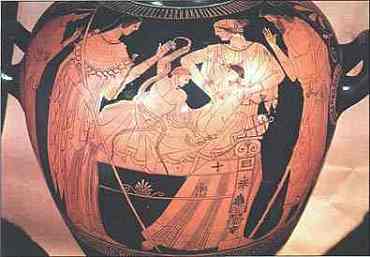 |
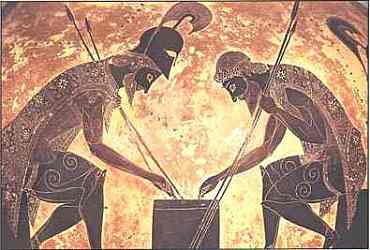 |
Background: Island of Cos. An apotropaic head of the Gorgona Medusa with motifs radiating out from the center of the composition. Mosaic of the Late Hellenistic Era.

